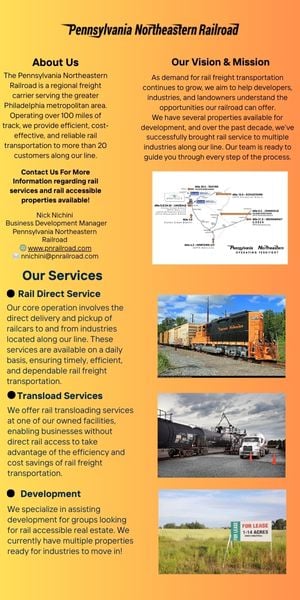
Chapter Profile: NAIOP Minnesota
The state’s solid infrastructure opens opportunities for adaptive reuse and redevelopment.
Minnesota is home to many of the nation’s most recognizable corporations and nonprofits, including Target, 3M, General Mills, US Bancorp., Cargill, Best Buy and the Mayo Clinic. Its economy is known for its diversity, with the Twin Cities of Minneapolis and St. Paul ranking as the 17th most diverse economy out of 384 U.S. metropolitan areas. In its annual Best States Rankings for 2023, U.S. News placed Minnesota at the very top of its infrastructure rankings and ranked it second in the economic opportunity subcategory.
Ahead of the NAIOP National Forums Symposium in Minneapolis, May 8-10, Development magazine asked NAIOP Minnesota President David Anderson, senior vice president at Frauenshuh, Inc., to provide some perspective on CRE trends and issues in the North Star State.
Development: What are the market conditions for member companies in your area?
Anderson: Depending on sector and geography, market conditions vary. The central business district multitenant office sector continues to face headwinds where pressures around hybrid work and shrinking office demand are exacerbated by rising interest rates and capital market constraints. That said, the flight-to-quality, first-class assets enjoy reasonable levels of activity and performance, particularly in select suburban and urban subzones. On the industrial side, the market has been relatively resilient. While there are some signs of slowing, the fundamentals of the market remain relatively strong across the region. Health care continues to forge ahead, with many of the region’s and state’s largest systems continuing to plan major strategic investments.
Development: What are the challenges you’re facing in either the business or regulatory climate in your area?
Anderson: Minnesota has enjoyed a storied history of founding, growing and sustaining numerous Fortune 500s and some of the most successful companies in the world. Unfortunately, the state is facing fierce competition from other regions of the country to attract talent and innovation, including some regions that are providing more aggressive incentives to private sector investment. As a state and region, we need to invite companies to locate and grow in Minnesota and build on our strength around innovation, productivity and quality of life, while remaining cost competitive with reasonable, streamlined regulation.
Development: What are the big opportunities in commercial real estate in your area right now?
Anderson: Adaptive reuse and redevelopment of assets in the core and inter-tier suburbs are opportunities that continue to present themselves across sectors. As a region, we are fortunate to have reasonably well-developed and maintained infrastructure that allows for this type of redevelopment and reinvestment. I would add that we are extremely fortunate to have some of the most innovative developers, investors, and engineering, design and construction companies in the nation right here in our backyard. That bodes extremely well for capitalizing and leading the next cycle of opportunities in this market. The next few years will be a remarkably exciting time.
Development: What are some of your chapter’s legislative priorities?
Anderson: The chapter’s primary legislative priority remains commercial/industrial property tax relief. Minnesota is the only state in the country that taxes commercial and industrial property exclusively through the state general levy. Our public policy team has worked tirelessly to reduce or eliminate this tax. To support this effort, we educate policymakers with research on Minnesota’s tax on commercial/industrial properties. The team also works with policymakers to reduce cost and regulatory burdens on business owners, entrepreneurs and employers. We shape policies that encourage businesses to stay, invest and expand in Minnesota.
Development: Education is an important part of NAIOP’s mission. Have there been educational sessions specific to your chapter recently?
Anderson: Since the 1980s, our chapter has held annual office and industrial market updates with local experts and panels. These programs continue to be well attended and provide timely and insightful information to our members.
NAIOP Minnesota also holds a series of small-group, member-only education opportunities under the banner of “Closer Look” discussions. These Closer Look events strategically target and engage principal members and receive exceptional markings in effectiveness. In the past year, topics have focused on the state of Minnesota’s economy with a speaker from the Federal Reserve Bank of Minneapolis, a case study of the Destination Medical Center in Rochester and the rise of life sciences, and a primer on public financing options.
The chapter also continues its annual University Real Estate Challenge program, which will celebrate its 21st year in 2024. This competition serves as a way for the chapter to engage the next generation of industry leaders.
Development: Is there a question I didn’t ask you here that you’d like to answer?
Anderson: Yes. What is your chapter doing to cultivate the next generation of commercial real estate and development industry leaders? NAIOP Minnesota is proud of its Developing Leaders (DL) program, which we view as a highlight of our chapter’s success. Now in its 17th year, the DL committee provides robust programming and networking for young and emerging industry professionals. Additionally, the annual mentorship program brings together emerging leaders with industry veterans to build a tremendous knowledge-sharing and relationship-building network. We see this not only as an area of success but also as an area of continued growth and tremendous added value to NAIOP Minnesota’s membership.
Jonathan Rollins is the managing editor of publications for NAIOP.
RELATED ARTICLES YOU MAY LIKE

What’s Working and What’s Not Working in CRE
An economist’s take on how we got here and what to watch in 2024.
Read More
From the Editor: Uncertainty Clouds Outlook for 2024
The economy is demonstrating resiliency, inflation is easing, and interest rates may hold steady in the coming months.
Read More
Unlocking the Potential of Commercial Real Estate at the University Level
Involvement in educational programs benefits the seasoned and the green.
Read More


